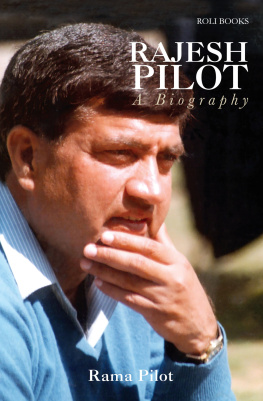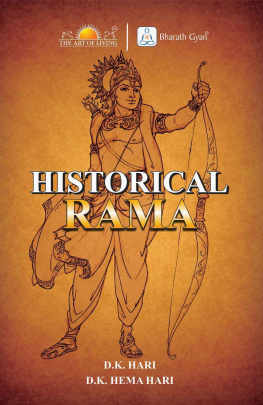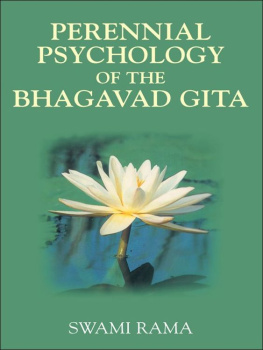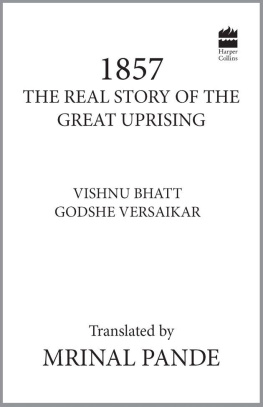Vikrant Pande - In the Footsteps of Rama
Here you can read online Vikrant Pande - In the Footsteps of Rama full text of the book (entire story) in english for free. Download pdf and epub, get meaning, cover and reviews about this ebook. year: 2021, publisher: HarperCollins India, genre: Detective and thriller. Description of the work, (preface) as well as reviews are available. Best literature library LitArk.com created for fans of good reading and offers a wide selection of genres:
Romance novel
Science fiction
Adventure
Detective
Science
History
Home and family
Prose
Art
Politics
Computer
Non-fiction
Religion
Business
Children
Humor
Choose a favorite category and find really read worthwhile books. Enjoy immersion in the world of imagination, feel the emotions of the characters or learn something new for yourself, make an fascinating discovery.

- Book:In the Footsteps of Rama
- Author:
- Publisher:HarperCollins India
- Genre:
- Year:2021
- Rating:4 / 5
- Favourites:Add to favourites
- Your mark:
- 80
- 1
- 2
- 3
- 4
- 5
In the Footsteps of Rama: summary, description and annotation
We offer to read an annotation, description, summary or preface (depends on what the author of the book "In the Footsteps of Rama" wrote himself). If you haven't found the necessary information about the book — write in the comments, we will try to find it.
In the Footsteps of Rama — read online for free the complete book (whole text) full work
Below is the text of the book, divided by pages. System saving the place of the last page read, allows you to conveniently read the book "In the Footsteps of Rama" online for free, without having to search again every time where you left off. Put a bookmark, and you can go to the page where you finished reading at any time.
Font size:
Interval:
Bookmark:
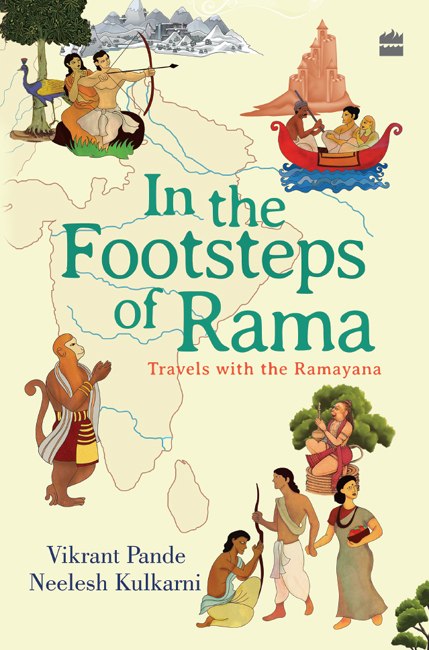

Contents

I t all began with a question do you know where Chitrakoot, mentioned in the Valmiki Ramayana, is located in India? We had asked nearly a hundred friends this question, and none of them knew. When we pulled out a map and pointed out the city in Madhya Pradesh on it, they were shocked to learn that not only does the place still exist, but it is a major tourist hub as well. Similarly, most had heard of Kishkindhya but were really surprised to learn that it is located very close to Hampi.
So, thats when we understood most people know the Ramayana pretty well, but have never been to or even given much thought to the places mentioned in it. In the process of speaking to our friends, we also realized that there exist several tales associated with the mahakavya, in the form of folklore and forgotten stories, that find no mention in the versions written by Valmiki, Tulsidas, Kamba, and many others before and after them.
We knew at once we had to do something about this. But before we dive into why we wrote this book, let us quickly recap the basic storyline of the Ramayana.
The tale is a simple one. Rama, the prince of Ayodhya, is on the verge of being named as successor to his father, Dasharath. Thats when his stepmother Kaikeyi invokes a promise made by her husband to her years ago, and asks for her son, Bharat, to be deemed as successor instead and for Rama to be exiled to the forest for fourteen years. Rama agrees to honour his fathers word and instantly leaves for the forest. His wife, Sita, too follows him in his exile, and his dutiful brother, Lakshman, insists on accompanying them too. In the meanwhile, Dasharaths other sons Bharat and Shatrughan learn of this only when they return to Ayodhya. They try their best to bring the trio back, but Rama insists he has to keep his word. Bharat agrees to rule as a regent in the rightful heirs absence. The trio then go to Chitrakoot, where they spend considerable time, before travelling through the Dandakaranya forest, to go to Panchavati (near present-day Nashik). In the forest, Shurpanakha, Ravanas sister, is insulted by the two brothers. When she tells Ravana what happened, he abducts Sita and takes her to Lanka. Rama is devastated and the brothers search for Sita in vain, until they meet Hanuman and Sugreev. Rama helps Sugreev by killing his brother, Vali, who had wrongly exiled him. This act earns him Hanuman and Sugreevs loyalty, and the former is able to finally locate Sita in Lanka. Rama, with his army of vanars, builds a bridge over the sea across Rameshwaram and attacks Lanka, the most powerful kingdom in the world then. A fierce battle ensues between Ravanas highly trained military on one side and the ragtag army of Ramas soldiers on the other. Against all odds, Rama emerges victorious and returns to Ayodhya triumphant, with Lakshman and Sita.
The Ramayana is a story of ideals, with an emphasis on the definition of Dharma, or that what is right. It is a tale of honour and bravery. Valmikis Rama is an ideal man, who suffers miserably when his wife is abducted and acts like any mortal. He has to be reminded of his divinity often, unlike the Mahabharatas Krishna, who knows he is the Lord and therefore behaves like one. This theme also finds place in the versions written by Tulsidas and Kamba of a God who behaves like a mortal. In this book, we have tried to capture the various facets, human and divine, of this avatar of Lord Vishnu.
Now, weve all heard tales from the Ramayana, either in the form of bedtime stories told by our grandparents or in the exciting new adaptations coming out these days. Valmikis Ramayana has been translated into several languages (although we think most of them are rather dull), while Tulsidass version is recited as the Sri Ramacharitamanasa. Further, each region in India seems to have its own version, and twenty-five retellings exist in Sanskrit alone! There are also Ramayanas in Indonesia, Cambodia, Vietnam, Tibet, and other South Asian countries. And lets not forget that there are Jain and Buddhist versions of the Ramayana as well as retellings that are part of other texts such as the Mahabharata, the Devi Purana and the Shaiva Purana. Similarly, there are thousands of oral renditions, with kathakars and kirtankars who tell the story in their own fashion.
All of these versions retain the basic story of Rama but add stories to it to accommodate local folklore. So very often we see conflicting versions of events. For instance, the Lakshman Rekha, to many an integral part of the story, is completely absent in Valmikis Ramayana, as is the story of Shabari tasting the berries before feeding them to Rama and Lakshman. In one of the Jain versions, Sita is Ravanas daughter she had been abandoned by him at birth as it was prophesized that she would be the cause of his death and in the Shakta version, it is she who kills Ravana. In the Dasharath Jataka, she is actually Ramas sister, and in another Jain version, Lakshman kills Ravana for Rama is sworn to non-violence, being a tirthankara. In the epic retelling by Tulsidas, Rama meets his sons in the battlefield when they abduct a royal horse sent out by him as part of a ritual sacrifice, but in Valmikis version, he meets them in his court, when they sing the Ram Katha before him.
When we learnt that there exist so many different versions of one story, we were utterly fascinated. We knew we wanted to compile them in the form of a book, but it is impossible for anyone to write one version of the epic with all the variations in it. So, we decided to visit all the places mentioned in the Ramayana Valmikis and Tulsidass renditions, for they are the most popular and gather local folklore from there. Given the sprawling storyline, we decided to limit our quest to Ramas exile and the events that unfolded thereafter. Our journey started and ended in Ayodhya and includes a long tour of Sri Lanka.
We want the reader to look for the places associated with the epic, and we want to help them discover the lesser-known stories. We went in search of local pundits, sadhus, professors, senior citizens and, in one case, even a royal family, to ask them about their stories of the Ramayana. We then checked the stories against versions of the epic written by Valmiki, Tulsidas, Kamba, and Eknath, the Adhyatma Ramayana, and the Padma, Hanuman and Devi Puranas. In this, we also learnt that the beauty of the Rama Akhyan is that whether you omit or add stories to it, the essence of the epic stays undiluted.
The works of Shri Ramavatar Sharma, who has meticulously travelled to all the temples associated with Rama in his fourteen-year journey across India, helped us immensely. Numerous friends took time to enthusiastically tell us stories they have known, and we are deeply grateful to them.
Our spouses assisted us every step of the way: Subha acted as an interpreter in Tamil and Kannada, while Sarita, with her infectious enthusiasm, was always ready to talk to various guides and priests to see if a nugget of information could be extracted! Our deepest gratitude to Kanishka Gupta, our literary agent, friend and guide; Amish Raj Mulmi, whose suggestions helped us flesh out the stories better; and Udayan Mitra and Rahul Soni from HarperCollins India, who took an immediate liking to our first chapter.
To our readers, we hope this book acts as a friendly guide, which can help you discover the Ramayana for yourself, and maybe even spur you to visit the places and uncover more tales!
Font size:
Interval:
Bookmark:
Similar books «In the Footsteps of Rama»
Look at similar books to In the Footsteps of Rama. We have selected literature similar in name and meaning in the hope of providing readers with more options to find new, interesting, not yet read works.
Discussion, reviews of the book In the Footsteps of Rama and just readers' own opinions. Leave your comments, write what you think about the work, its meaning or the main characters. Specify what exactly you liked and what you didn't like, and why you think so.


